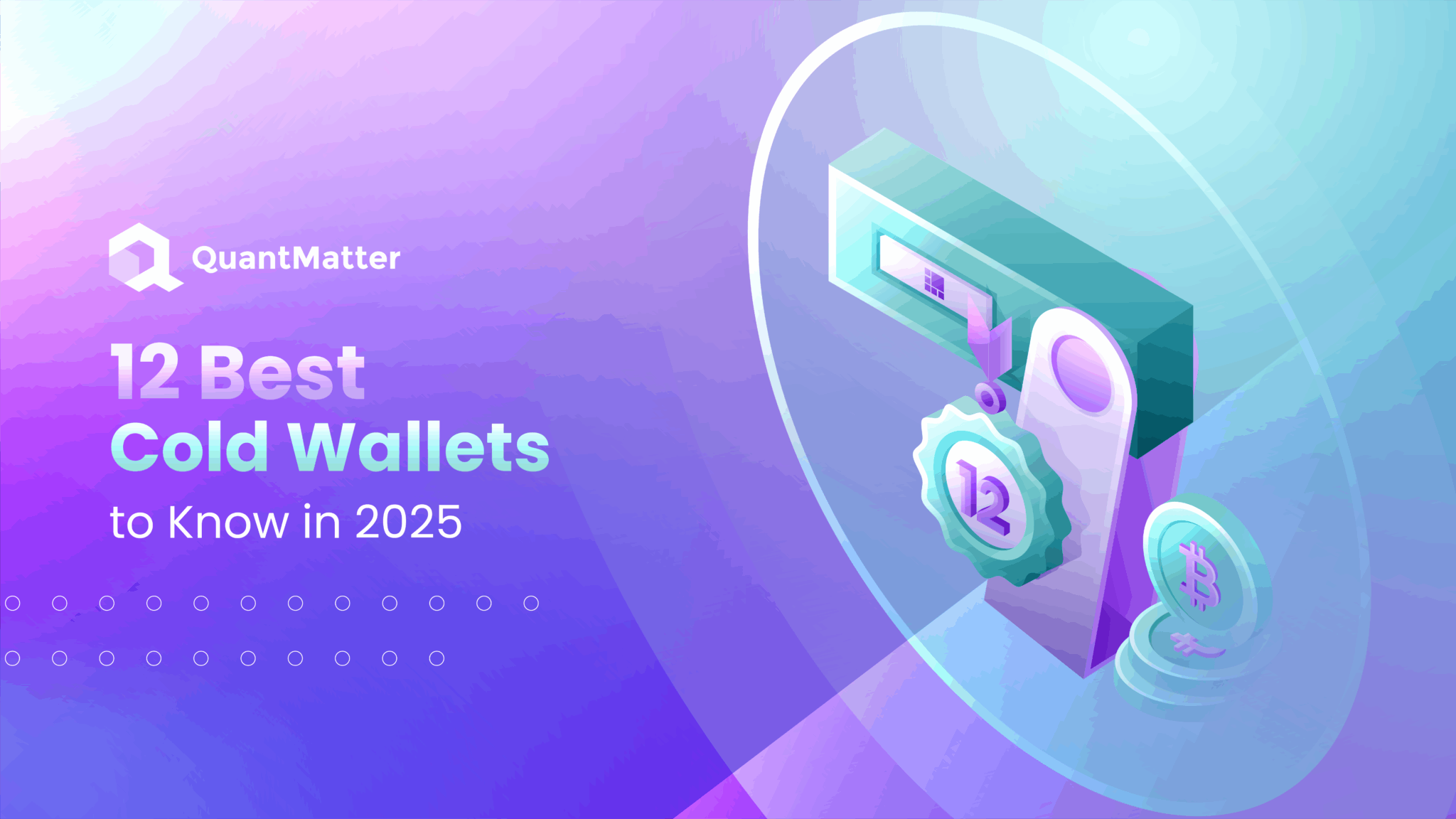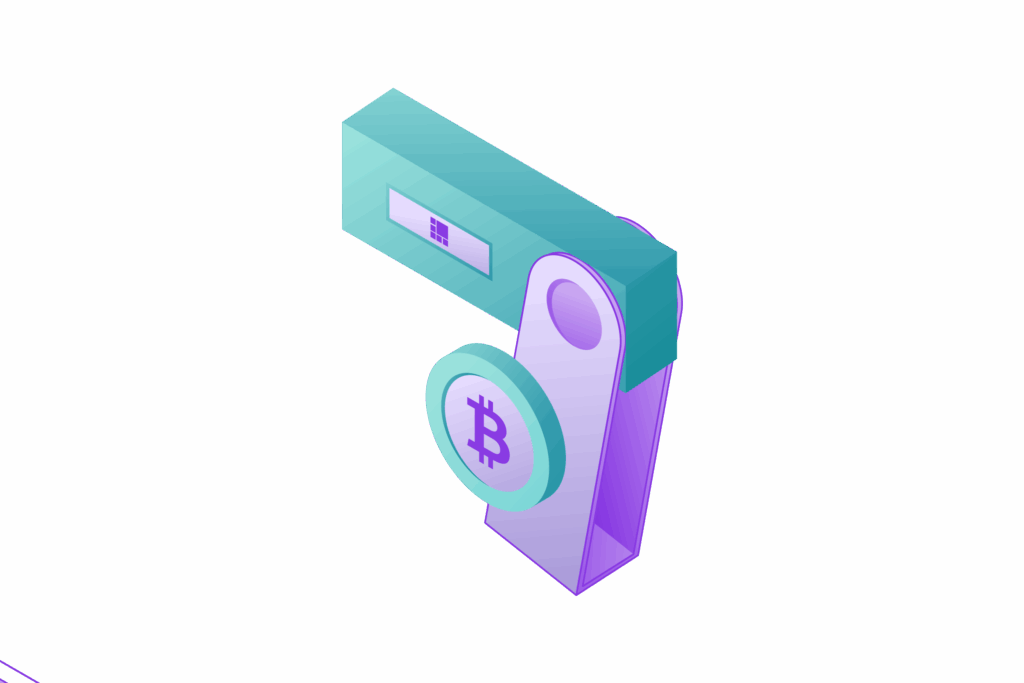
Storing your cryptocurrency safely is more important than ever in 2025. With the rise in scams, hacks, and unpredictable platform failures, keeping your digital assets online is a bigger risk now than it was even a year ago. That’s where cold wallets come in.
Cold wallets are physical devices or offline methods of storing crypto. Unlike hot wallets, which are connected to the internet, cold wallets stay disconnected unless you’re signing a transaction. This makes them much harder to hack and more reliable for long-term storage.
Whether you’re holding Bitcoin, Ethereum, or any other crypto, a cold wallet gives you peace of mind. But with so many products out there, choosing the right one isn’t always simple. That’s why we’ve made this guide to help you find the 12 best cold wallets to know in 2025, plus tips on choosing and using them.
Why Cold Wallets Matter in 2025

The crypto market keeps changing, and so do the threats. Exchanges go bankrupt. Wallets get drained. Even the best-known platforms can suddenly shut down or face legal trouble. If your coins are online, they’re always exposed to risk.
Cold wallets give you control. You hold your own private keys, and that means no one else can access your funds unless you allow it. Even if a hacker breaks into your email or exchange account, they can’t touch your cold-stored coins.
More people now use cold wallets not just for safety but also to avoid third-party dependence. This aligns with the original purpose of crypto — to be decentralized and independent of banks and institutions. As adoption grows, so does the need to take custody of your own assets.
Also Read: Crypto Treasury Management: A Comprehensive Guide
Top 12 Best Cold Wallets to Know in 2025
Cold wallets are now essential for anyone serious about safeguarding digital assets. With increasing online threats and hacks targeting exchanges and hot wallets, storing crypto offline has become the gold standard for security. Whether you’re holding Bitcoin, Ethereum, or altcoins, having the right cold wallet ensures peace of mind. In 2025, several standout models have emerged—each offering unique features tailored for different kinds of users. Let’s explore the most trusted cold wallets you should consider this year.
1. Ledger Nano X
The Ledger Nano X remains one of the most popular cold wallets in the market, combining mobile functionality with high-end security. It supports over 5,500 digital assets, making it ideal for diverse portfolios. The wallet connects via Bluetooth, allowing users to manage funds through smartphones. Its secure chip (CC EAL5+) and Ledger Live integration offer intuitive user experiences. Beginners and pros alike value it for its balance between convenience and safety.
| Pros | Cons |
| Supports thousands of coins | Pricier than entry-level wallets |
| Mobile-friendly via Bluetooth | Bluetooth may raise privacy concerns |
| Sleek interface | Not open-source |
| Great build quality | Limited internal storage |
2. Ledger Stax
Ledger Stax is Ledger’s luxury-grade wallet, designed by the creator of the iPod. It has a curved e-ink touchscreen and is designed for intuitive swiping and display of NFTs. The design feels futuristic while preserving the hardware wallet’s core principles. It also supports a wide range of cryptocurrencies via the Ledger Live app. While a bit pricey, it’s favored by collectors and NFT holders for its style and innovation.
| Pros | Cons |
| Stylish, touch-based UI | High price tag |
| NFT-friendly display | Slightly bulky for portability |
| Long battery life | Still dependent on Ledger Live |
| Supports many assets | Still fairly new to the market |
3. Trezor Safe 3
Trezor Safe 3 is an affordable, secure hardware wallet from the makers of the original Trezor. It features an EAL6+ Secure Element chip, a notable improvement in security. Open-source firmware offers transparency for privacy-minded users. This wallet supports over 7,000 tokens and is compatible with major third-party apps. It’s an excellent starter cold wallet for everyday users.
| Pros | Cons |
| Budget-friendly | No Bluetooth/mobile features |
| Open-source software | Less modern UI than competitors |
| Excellent security chip | Smaller screen |
| Widely compatible | Less premium design |
4. COLDCARD Mk4
For Bitcoin maximalists, COLDCARD Mk4 is the holy grail of hardware wallets. It is air-gapped, meaning it never needs to connect directly to a computer, using SD cards instead. This reduces potential attack surfaces significantly. The wallet supports advanced multisig features and PIN-based duress protocols. While not suited for altcoin holders, it’s beloved for its hardcore focus on BTC safety.
| Pros | Cons |
| Fully air-gapped | Bitcoin-only |
| Highly secure build | Complex for beginners |
| Advanced multisig support | No mobile support |
| Designed for pro BTC users | Niche use case |
5. Cypherock X1
Cypherock X1 breaks from convention by separating the private key across five cards using Shamir Secret Sharing. This means a lost wallet won’t cost you your coins. It’s ideal for users concerned with loss, theft, or natural disaster. The device supports multiple assets and doesn’t require a seed phrase. For security-focused users, this is a game-changer.
| Pros | Cons |
| Eliminates seed phrase risk | Can be complex to restore |
| Uses Shamir Secret Sharing | Still gaining market trust |
| Backup recovery is decentralized | Pricey |
| Sleek, modern device | Requires more setup time |
6. NGRAVE Zero
Known as one of the most secure wallets, NGRAVE Zero features full offline capability. It never touches the internet and uses QR code scanning for transactions. The device includes biometric authentication, making it nearly impenetrable. Paired with a steel backup plate, it’s built for serious long-term holding. It’s a fortress in your pocket.
| Pros | Cons |
| Completely air-gapped | Expensive |
| Biometric security | Heavier than most |
| QR-based transactions | Slower workflow |
| Offline recovery option | Limited third-party integration |
7. BC Vault
BC Vault offers secure storage with encrypted backups and random PIN generation for multiple wallets on one device. It can store millions of tokens and private keys. It uses a unique method that encrypts wallets with a global password and backup card. Ideal for institutions or users managing multiple portfolios. It’s more of a vault than a wallet—perfect for high net-worth users.
| Pros | Cons |
| Stores millions of keys | Not open-source |
| Advanced encryption methods | Interface less intuitive |
| Backup card and PIN separation | High learning curve |
| Multi-wallet management | More suited for advanced users |
8. D’CENT Biometric Wallet
The D’CENT wallet brings something fresh—biometric login via fingerprint. It supports dozens of coins including Bitcoin, Ethereum, and major ERC-20 tokens. Its mobile-friendly design connects via Bluetooth. It has a display screen for real-time transaction confirmation. D’CENT balances convenience with physical protection.
| Pros | Cons |
| Biometric login | Limited community support |
| Mobile app integration | Bluetooth might concern purists |
| Easy to use | Less popular than Ledger/Trezor |
| Decent asset coverage | Slightly larger in hand |
9. Ledger Nano S Plus
Ledger Nano S Plus is the beginner-friendly sibling of the Nano X. It’s affordable, simple, and covers over 5,500 digital assets. There’s no Bluetooth here—USB only, which makes it a little more secure in some eyes. It has more memory than the original Nano S, allowing multiple apps at once. A great choice for new users dipping their toes into cold storage.
| Pros | Cons |
| Budget option | No Bluetooth/mobile support |
| Supports many assets | No wireless usage |
| Easy for beginners | Smaller screen |
| Ledger Live integration | Less internal memory than Nano X |
10. Bitkey (by Block Inc.)
Bitkey is a newer product built by Jack Dorsey’s company Block. It’s made for mainstream adoption, using a mobile app and key split method. Security is improved through multi-device signing, even if one device is lost. The focus is on ease of use and self-custody. Bitkey may be the first wallet for many users trying crypto for the first time.
| Pros | Cons |
| Trusted developer (Block Inc.) | Limited asset support (Bitcoin) |
| Mobile-first approach | Still early in adoption |
| Innovative key recovery | Less control for advanced users |
| Beginner-friendly | Primarily for BTC |
11. Trezor Model T
This flagship wallet from Trezor has a color touchscreen and supports over 1,800 assets. It also includes Shamir backup, passphrase entry, and SD card encryption. Model T is open-source, giving full transparency on the firmware and features. It’s great for serious holders needing access to advanced functionality. The UI is user-friendly despite the tech depth.
| Pros | Cons |
| Color touchscreen | Higher cost than Safe 3 |
| Shamir backup available | Bulkier than Nano |
| Strong compatibility | Somewhat outdated design |
| Fully open-source | No Bluetooth |
12. KeepKey
KeepKey is a cost-effective, beginner-friendly wallet known for its large screen. It’s easy to use and supports ShapeShift integration for in-wallet exchanges. While not the most feature-rich, it works for people who value simplicity. It supports all major coins and tokens. Think of it as a sturdy starter wallet with basic cold storage.
| Pros | Cons |
| Simple setup | Fewer coins supported than others |
| Large screen | No mobile support |
| In-wallet exchange integration | Lower security chip |
| Affordable | Fewer updates |
In 2025, cold wallets aren’t just tools—they’re vaults for your digital future. Whether you’re a seasoned investor, a Bitcoin purist, or a casual NFT collector, there’s a wallet on this list that fits your needs. The balance between usability and security matters more than ever. Choosing the right cold wallet means choosing freedom, safety, and long-term peace of mind. Don’t wait for a hack to start protecting your crypto—pick a cold wallet and lock in your security today.
How to Choose the Best Cold Wallet

Choosing the right cold wallet isn’t just about picking the most expensive or popular one. It’s about finding what fits your goals, habits, and comfort level with technology. A good wallet should work for you, not the other way around.
When picking a cold wallet, there’s no single “best” one — it depends on your needs. Ask yourself these questions to make a smart choice:
What Coins Do You Hold?
Not every wallet supports all coins. If you hold only Bitcoin, something like Coldcard may be ideal. If you own many altcoins, a Ledger or Trezor might make more sense.
How Tech-Savvy Are You?
Some wallets are simple plug-and-play devices. Others require more setup or technical steps. Beginners often prefer touchscreens and mobile apps, while advanced users might go for air-gapped wallets with customizable settings.
How Often Will You Use It?
If you plan to use your wallet often, you might want one that connects quickly to a phone or computer. If you just want to store crypto and forget about it, focus on security and durability.
What’s Your Budget?
Cold wallets range from $50 to $250. More expensive doesn’t always mean better — it just may come with more features. Make sure you’re getting value for your money.
Taking the time to match your wallet with your actual needs will save you money, stress, and potential mistakes down the road. Security is important, but so is convenience — and the right cold wallet balances both.
Also Read: 5 Best Crypto On-Ramp Platforms in 2025
Safety Tips for Using Cold Wallets

Having a cold wallet is a smart move, but it’s only part of the job. If you don’t use it properly, you could still put your funds at risk. The good news is that most cold wallet security comes down to a few simple habits. Here’s what to keep in mind.
- Always Buy from Official Sources: Avoid buying from eBay, Amazon third-party sellers, or used devices. These could be tampered with. Always buy direct from the maker or an authorized distributor.
- Set Up in Private: When you set up your wallet, do it in a secure place. Don’t record your seed phrase online or store it on a computer. Write it on paper or use a metal backup.
- Use a Strong Passphrase (if supported): Some wallets let you add a passphrase to your seed phrase. This adds another layer of protection in case someone finds your backup.
- Check for Tampering: Make sure the packaging is sealed and nothing looks off when your wallet arrives. If anything seems unusual, don’t use it.
- Back Up Your Seed Phrase: If you lose access to your device, your seed phrase is the only way to recover your funds. Store backups in more than one secure location — but never digitally.
- Keep Firmware Updated: Manufacturers often release firmware updates to fix bugs or add security features. Update only from official sources, and verify before installing.
Cold wallets can protect you from online threats, but only if you use them correctly. Take your time setting them up, keep your recovery info safe, and don’t skip the basics. These small steps can make a big difference in keeping your crypto secure.
Conclusion
Cold wallets are no longer just for hardcore crypto users. In 2025, they’re essential tools for anyone serious about keeping their digital assets safe. Online platforms are too risky to rely on alone, and the cost of losing your crypto can be high.
The good news is there are more quality cold wallets available now than ever. Whether you need something compact, ultra-secure, beginner-friendly, or packed with features, there’s an option that fits your needs. The 12 wallets listed above are the top choices to consider this year.
Remember — it’s not just about buying a cold wallet. It’s about using it right. Keep your backups secure, update your firmware, and stay aware of threats. If you treat crypto security seriously, your cold wallet will reward you with peace of mind and long-term control.
Disclaimer: The information provided by Quant Matter in this article is intended for general informational purposes and does not reflect the company’s opinion. It is not intended as investment advice or a recommendation. Readers are strongly advised to conduct their own thorough research and consult with a qualified financial advisor before making any financial decisions.

I'm Carina, a passionate crypto trader, analyst, and enthusiast. With years of experience in the thrilling world of cryptocurrency, I have dedicated my time to understanding the complexities and trends of this ever-evolving industry.
Through my expertise, I strive to empower individuals with the knowledge and tools they need to navigate the exciting realm of digital assets. Whether you're a seasoned investor or a curious beginner, I'm here to share valuable insights, practical tips, and comprehensive analyses to help you make informed decisions in the crypto space.
- Carinahttps://quantmatter.com/author/carina/
- Carinahttps://quantmatter.com/author/carina/
- Carinahttps://quantmatter.com/author/carina/
- Carinahttps://quantmatter.com/author/carina/
